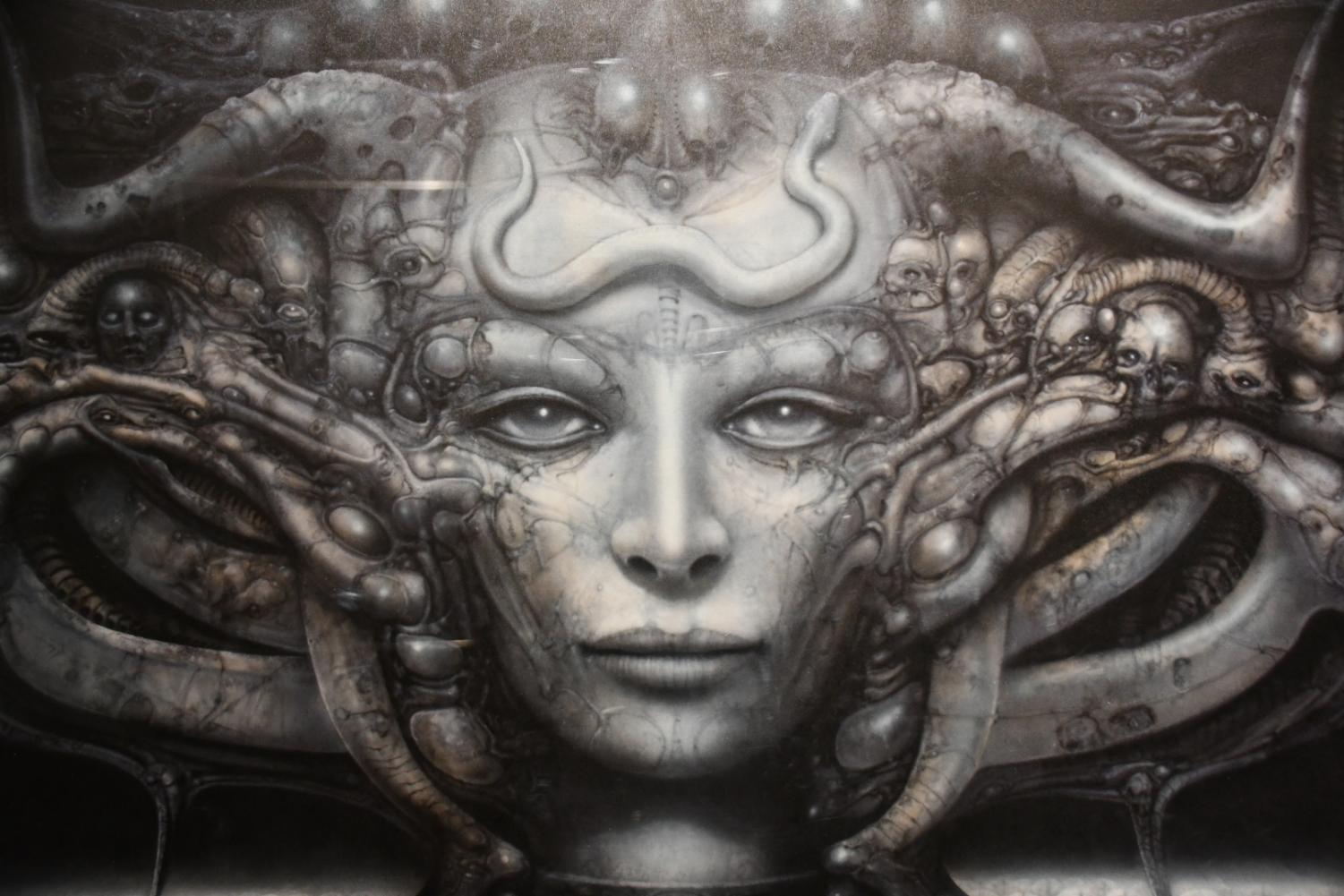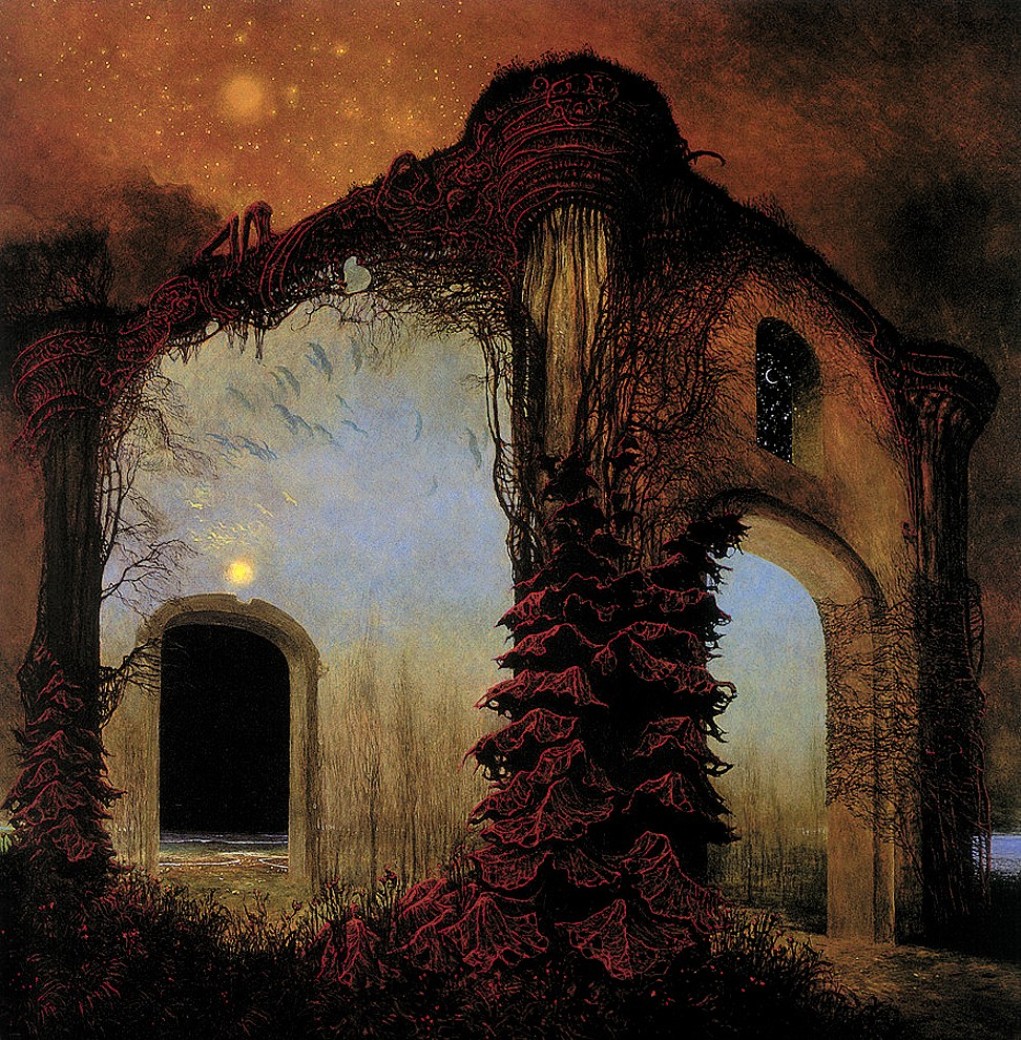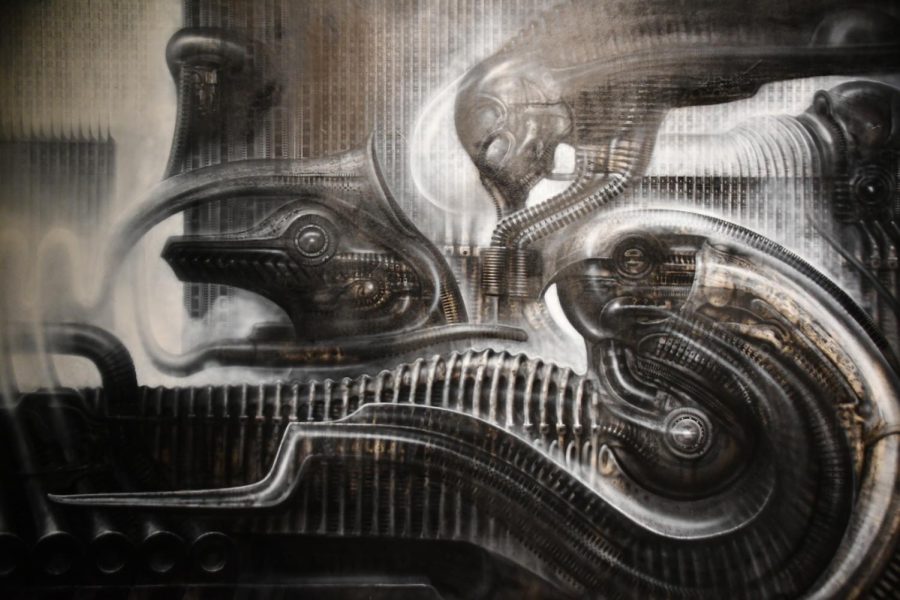Scorn: A Beautifully Twisted Journey, Finally Here After Eight Years
“Scorn’s” landscapes are an eerily perfect combination of machine and human-like features such as organs and bones, such as Giger’s “N.Y. City II Lovecraft over N.Y. City”.
The gripping, yet gruesome voyage through a biomechanical hellscape of a game, known as Scorn, is finally available to experience after just under eight years. Announced on November 12, 2014, the game’s release was pushed back due to insufficient funding and multiple redesigns and improvements of several aspects. However, it was eventually released on October 14, 2022 and is now available to play on PC through Steam and Xbox Series X|S.
An Uncanny Story of Two Parts
Described as an atmospheric first-person horror adventure game, Scorn and its plot are things of mystery and bizarreness. The story begins with a cutscene of the unnamed humanoid protagonist, trudging through the deserted landscapes of the surrounding area known as Polis. They make their way towards an massive, looming alien structure viewed a vast distance before them. Suddenly, the protagonist plummets down a hidden crevasse, and when they next observe their surroundings they find themself in some sort of abandoned reproduction facility. In order to free themselves from being forever trapped within the facility, they must activate and operate several doors, machines, and panels. The player must solve multiple puzzles to execute their grand escape, but unfortunately one such machine malfunctions and explodes. Filled with dread and fading hope, the protagonist is evidently consumed and enveloped by a terrifying surge of living flesh.
After the assumed death of the first protagonist, the player awakes, playing as a seemingly identical humanoid that must hatch and break free from their egg. They tear free from their capsule and rip their umbilical cord from their body. Once they arise and begin to navigate the desert terrain surrounding them, they eventually make their way toward a nearby structure. Inside the structure they are stalked by a lurking, bony, serpent and insect-like parasitic creature. Swiftly, the parasite scurries towards the player and latches itself into the flesh of the protagonist. The protagonist is unable to weaken the powerful grip of the parasite and must continue their journey with it fixed to their form. The parasite acts both as a benefit and disadvantage to the player— being used as a makeshift inventory for weapons, a key-like mechanism, an organic-looking healing tool, but also repeatedly plunging their arms into the protagonist’s form, infecting them and draining the player’s health.
Eventually, the protagonist and parasite duo push their way into some sort of paediatric unit within the structure, where malformed humanoid embryo’s are artificially developed as if in a womb. These embryos are then utilised as power and energy to operate doors, elevators, machinery, and even to power watch guards.
Perhaps one of the most menacing events of Scorn is when the player wanders into a large open area, where a colossal, pale, hunched over creature, with an elongated neck, known as the Crater Queen, sits, unable to move, atop an elevator. This creature is responsible for birthing several creatures from open wounds or holes from her back. The protagonist must activate four walkways that penetrate and slice through the Queen, likely in imitation of a caesarean section, to reach the elevator she sits upon. Once done, the elevator is able to be utilised, bringing the protagonist to a new area, but crushing and evidently ensuring the death of the Queen.
Eventually the player finds themselves in a citadel, hidden far away from the horrors that are the factories and beings of before. Once there, the protagonist discovers a machine that is able to remove the parasite feeding off their body. The procedure of removing the parasite would result in the protagonist’s mind being connected to a looming hive mind above them made of several tendrils of once alive beings, by a mechanical doctor. The protagonist’s body would be left, held gently within two sentry humanoids, brought to a mass of other discord bodies.
However, the protagonists defies the ritual-like process and control the sentires, and stumbles towards a portal, suggestive of female reproductive anatomy. Suddenly, the parasite scrambles to them, ripping them from the protective grasp of their maternal guardians. The parasite, now revealed to be the initial protagonist mutated into a monstrous form, clasps themself onto the current protagonist, halting them from proceeding further towards the portal, consuming them entirely. The final moments of Scorn present the grotesque, fused form of the protagonist and parasite, almost resembling an attempt at becoming a creature depicted on a carved mural within the citadel, meant to be the next, ascended state of existence.
Concept Art Book
A soon to be published concept art book titled Scorn: The Art of the Game, is available on Amazon.com for pre-order. It will be officially published on February 14, 2023. Detailed in its art and intricate creatures the book provides a wider lens of the universe of Scorn. The book doesn’t just depict various beings and creatures, some foe, some ominous statues, but it also includes masses of plot information, explanation, and lore, making it truly a work of uncanny imagination and tribute to its two artist inspirations.
Not Just a Game, but an Exhibit
Although the player can battle unsettling creatures using biomechanical weapons, solve odd and grotesque puzzles to traverse further, and discover the bizarre, childbirth entwined story of the character(s) they play as, Scornit is more of an art exhibit of H.R. Giger and Zdzisław Beksiński, which is done beautifully well, not only displays their style, but their unique, bizarre, and surreal minds.
H.R. Giger

Anyone familiar with Swiss artist H.R. Giger likely observed the obvious likeness to his art style and often freakish and outlandish concepts within Scorn. If not familiar with Giger himself, perhaps Ridley Scott’s 1978 Alien might ring a bell. That is right— Giger is the artist who designed the well-known alien or Xenomorph along with other aspects such as the ominous “Space Jockey” when the crew first entered the crashed ship.
Giger developed his signature biomechanical style, a blend of man and machine both physically and metaphorically, as initially displayed in Unter der Erde. Another of his many inspirations were the dreams and trauma he experienced. This path led him to be associated with the style of Surrealism. Landscapes he painted were uncanny and confusing, but they included the motif of his personal human experience, a key aspect in Surrealism. Despite the oppressiveness and eeriness of his scenes, the unity of his biomechanical style added an odd beauty to them.
There is no question as to why his style and themes he depicted were chosen to represent the core of Scorn as they are the near perfect portrayal of such disturbing content, but with a chilling, yet befitting elegance.
Zdzisław Beksiński

Based on his biography from Beksiński gallery, Zdzisław Beksiński had no formal education or teaching in art, but after working a job as construction site supervisor, which he loathed, he began to pursue artists avenues. While still employed in construction jobs he took up sculpting, using materials from his work. However, he initially began as a photographer, using his wife as a muse. Later, he began to grow tired of the confinements of photography and moved to painting.
According to an article from Surrealism Today about Beksiński, his style is referred to as dystopian surrealism and at other times gothic. Each of his paintings are leaden with detail, often with a main focus to each. His paintings are all untitled as to not have a title swaying any sort of interpretation of the actual piece. His pieces frequently present odd, disturbing, and gloomy atmospheres, sometimes with unusual architecture. Most of these paintings represent or clearly exhibit scenes of death and decay. Other pieces show morphed, humanoid-like figures in a dream-like environment, all the same capturing an unsettling emotion to them.
A Game Worth Playing
Scorn is a game full of symbolism towards birth, life, death, and what may come after. Another possible theme is that of civilization and what it may do in the grave fight to prevent extinction— in this case creating slave races to ensure the survival of the more “upper class” of the species. The true theme is unknown, but one can decide for themselves which of the grim and existential subjects best fits Scorn. To truly experience the eeriness, yet unsettling beauty and wonder of Scorn, one has to view it for themself— being placed into several life-threatening situations, discovering baffling creatures, and unearthing what their purpose is in a twisted and morphed world.

Sam Stokem is a senior at LRHS and is writing for the Lancer Ledger for their third year in a row. They are glad to continue to inform people about the...












